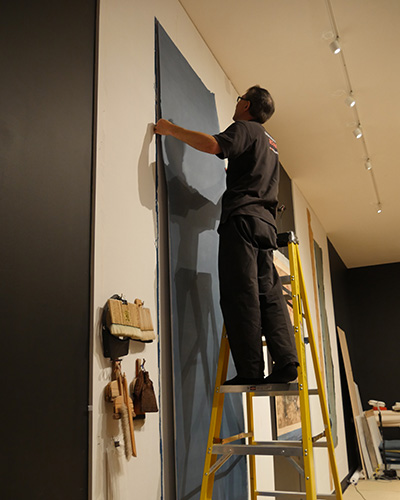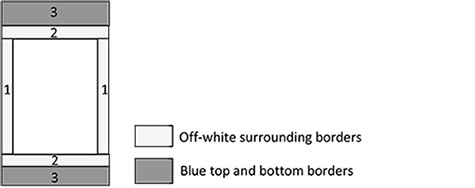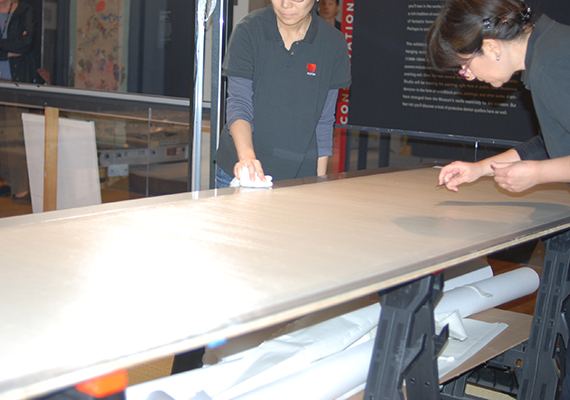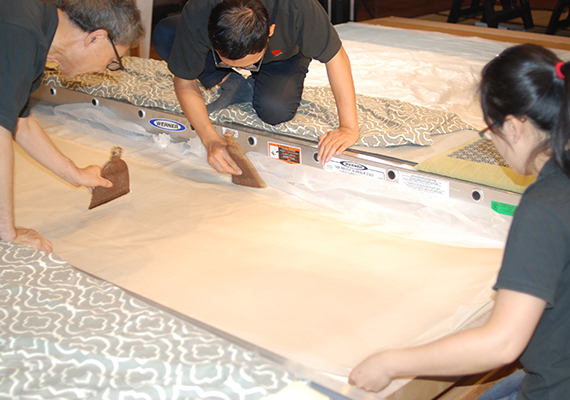With the silk borders and backing papers prepared, conservators are now ready to return the flattened painting to its original format as a hanging scroll, a type of mounting that provides the necessary support to display and store traditional Chinese paintings, which are usually painted on thin silk or paper. Because it is also the proper format from an aesthetic and cultural perspective, Chinese paintings are still normally mounted in this traditional mounting style. For Marshal Xin, this process will involve the joining of silk borders with the painting, addition of the overall backing, burnishing of the backing, and installation of the top stave and bottom dowel.
The painting is released from the work surface and squared by first loosely folding it over in half to mark two parallel lines and then trimming excess from the previously added silk margins.


The blue mounting silk is cut into long strips that will become the top and bottom borders.

As illustrated in the rough diagram below, four pieces of off-white silk will surround the painting and two pieces of blue silk will be used for the top and bottom borders. The dimensions and proportions of the silk borders are the same as those used in the previous mounting.

Hard paste is applied to the silk margins, covering about three-quarters of an inch along the outer edges.

Below, the off-white silk border is joined to the silk margin, and to ensure good contact, conservators smooth down the narrow areas of overlap by pressing with fingers and pounding with hammers.


Next, the previously prepared backing paper (seven sections of a three-layer laminate) is applied as an overall support, covering the back of both the painting and its surrounding silks. The process of attaching the final backing has to be completed in one day. For this important and labor-intensive task, conservators work in tandem in two teams. One team, pictured below, applies a watery paste to a section of the backing paper, carefully checking that there are no foreign objects or debris sticking to the pasted side of the paper. A second team works to lay down the backing, smoothing it down with palm brushes.


The mounted painting is then left to air dry. Using the same technique used to flatten the painting earlier, it will then be stretch-dried and released a few times. When the scroll is stretched on the drying surface, it will expand and shrink, depending on the humidity level in the air. Flattening and releasing a few times will allow the scroll to achieve a balance, eventually settling into a stable state. Meanwhile, conservators continue to fill small losses and start to inpaint the fills.